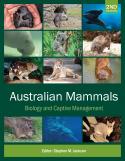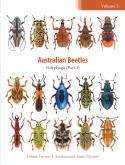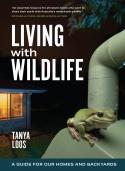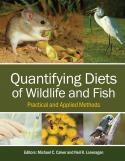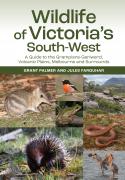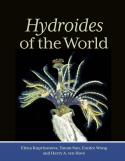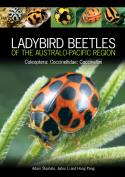Freshwater macroinvertebrates provide a useful and reliable indicator of the health of our rivers, streams, ponds and wetlands. As environmental awareness within the community increases, there is an increasing interest in the need to assess the health of our local waterways and school curriculums are changing to reflect this important ecological trend.
The Waterbug Book provides a comprehensive and accurate identification guide for both professionals and non-professionals. It contains an easy-to-use key to all the macroinvertebrate groups and, for the first time, high quality colour photographs of live specimens. It provides a wealth of basic information on the biology of macroinvertebrates, and describes the SIGNAL method for assessing river health. The Waterbug Book is full of practical tips about where to find various animals, and what their presence can tell about their environment.
Winner of the 2003 Eureka Science Book Prize and the 2003 Whitley Medal.
- Page 1Abstract
Freshwater macroinvertebrates are a diverse group of animals, ranging from worms and leeches to crustaceans and insects. You can encounter them when fishing, hiking, or bird watching, and you don’t have to study them intensively to appreciate them.
- Page 32Abstract
Freshwater sponges are much smaller and less spectacular than their saltwater relatives. They are often confused with aquatic plants, algae or fungal growth because of their simple construction. In fact, until the eighteenth century, sponges were not recognised as animals.
- Page 34Abstract
Most cnidarians live in the sea. The phylum includes some of the best known marine invertebrates, the sea anemones and the colonies of coral polyps that created our spectacular coral reefs. Jellyfish like the dreaded ‘blue bottle’ also belong to the Cnidaria.
- Page 36Abstract
This group of animals is united by the simplicity of their shapes. They all have simple digestive systems, some have a single opening, like the flatworms (including the temnocephalans), while others like the gordian worms have none at all.
- Page 41Abstract
To many people leeches are not very charismatic animals due to their annoying habit of sucking blood from people’s legs. However, freshwater leeches are fascinating to study as they possess powerful sensory organs and can display complex parental behaviour.
- Page 44Abstract
Freshwater oligochaet worms are plain-looking animals. They can look like ordinary earthworms but more often they are much thinner and shorter. They are all segmented, and if you use a microscope you can observe short bristles and hairs on each segment.
- Page 46Abstract
Chitons, clams, cuttlefish, mussels, octopus, squid, snails, and slugs are all molluscs, but only two classes, the bivalves and the gastropods, have successfully left the sea and invaded the land and its freshwaters.
- Page 59Abstract
Arachnids have eight legs and highly fused body segments. Instead of having a head, prothorax, mesothorax, metathorax and abdomen, these have been simplified to a cephalothorax and an abdomen in spiders and a single body segment in mites.
- Page 63Abstract
Microcrustaceans are a large group of very small animals that often turn up in samples from rivers, ponds and wetlands. Because they are so small, we only ever see their largest representatives.
- Page 68Abstract
Primitive crustaceans tend to have more legs than those that have evolved more recently. Syncarids, brine shrimp and tadpole shrimp all have numerous pairs of legs and closely resemble their geologically ancient ancestors found as fossils around the world.
- Page 77Abstract
Decapods are usually large, highly mobile animals. They are often the largest invertebrates in a stream and as a result are an important part of the food chain.
- Page 84Abstract
Springtails look like tiny insects and were once regarded as a primitive insect group. However, these soft-bodied invertebrates have now been placed in a separate class.
- Page 86Abstract
Caterpillars—the larvae of moths and butterflies—are a diverse and widely distributed group, so it is not surprising that some of them have managed to successfully adapt to freshwater habitats.
- Page 88Abstract
Larger, terrestrial members of this order of insects hold their abdomens with a distinctly scorpion-like posture and this is where they get their name.
- Page 89Abstract
Some of the largest freshwater invertebrate predators belong to this fearsome group of insects. They are quite common in the cobble streams of mainland south-eastern Australia.
- Page 90Abstract
This order includes some of the strangest aquatic insects. They are usually quite rare but very distinctive.
- Page 92Abstract
Beetles are the largest and one of the most diverse groups of animals on Earth with more than 300,000 known species. Many of them have successfully colonized freshwater habitats.
- Page 112Abstract
The dipterans are a very diverse group of insects that occur in most, if not all of the inland waters of temperate Australia. They can be found in a range of environmental conditions, thriving in septic tanks and wilderness areas alike.
- Page 131Abstract
The mayflies are one of the more well-known stream insects. Their invertebrate fame is the result of their short lives as adults and their tendency to end up as fish food. The adults are a common sight, swarming over water during the warmer months.
- Page 144Abstract
Although the term ‘bugs’ is often used as a nickname for all insects, true bugs are hemipterans, belonging to the suborder Heteroptera. There are around 270 aquatic or semi-aquatic species in Australian inland waters—many people will have heard of backswimmers, water striders or waterboatmen.
- Page 161Abstract
The odonates are one of the best-known group of freshwater invertebrates. They have a special place in human history, appearing in Japanese art, English literature, and even ancient Greek writings.
- Page 180Abstract
Stoneflies are a small, relatively primitive, group of insects. The nymphs are sensitive to water quality and are abundant in alpine streams.
- Page 187Abstract
The caddisflies are an extremely diverse group, including some of freshwater’s most fearsome predators, as well as docile algal grazers and leaf chewers.





